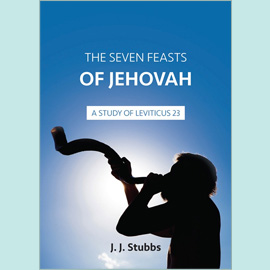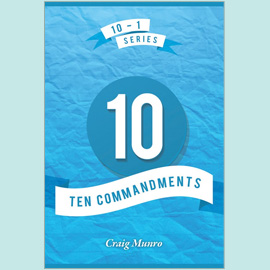(Mt 26.6-16; Mk 14.3-11; Jn 12.1-11)
The Supper
The meal was enjoyed by many, although it had been especially prepared for the Lord: "There they made him a supper" (Jn 12.2). Similarly, each assembly of God’s people should always remember to keep the Lord’s Supper primarily for Christ Himself, even though every believer present will benefit. It was with only six days till Passover (Jn 12.1) and the Saviour’s death, and at a time when the religious leadership was feverishly plotting to murder the Lord Jesus (Mt 26.3-5; Mk 14.1,2) that "they made him a supper". This suggests that even when time is short and days are spiritually dark it is possible to do something of great value for Christ. The interactions, motives, and actions of the various characters in the story give invaluable spiritual lessons and provide a useful insight into how a local church may work together. Consider the different people involved.
Simon & Lazarus
Since Simon is described as "the leper" (Mt 26.6; Mk 14.3), and lepers were forbidden from mixing with society (Lev 13.45,46), it is likely that he had been cured by the Lord Jesus. Even though his relation to Mary, Martha, and Lazarus is not stated, they clearly shared a deep-rooted appreciation for the Lord; and this brought them together. In the same way, a local assembly consists of individuals who are frequently very different, yet united through mutual love for Christ. That Simon’s house had the capacity to receive many Jews (Jn 12.9) implied that it was large, and Simon himself wealthy. By receiving the Lord and His disciples, he not only showed hospitality, but also tremendous courage, for he defied the official edict "that, if any man knew where [Christ] were, he should shew it" (Jn 11.57). Simon’s generous use of his home should prompt all believers, but especially those who are rich, "That they do good, that they be rich in good works, ready to distribute, willing to communicate" (1 Tim 6.18). His boldness, in the face of hostility, teaches us that "We ought to obey God rather than men" (Acts 5.29).
Lazarus’s position of "reclining at the table with [Christ]" (Jn 12.2, NASV) should, in turn, stimulate saints to regularly be quiet and enjoy fellowship with the Lord. News about Lazarus’ resurrection spread quickly, and encouraged many to come "that they might see Lazarus also" (Jn 12.9). Further, "by reason of him many of the Jews went away, and believed on Jesus" (Jn 12.11). Because of this, he also became the target of religious hatred: "the chief priests consulted that they might put Lazarus also to death" (Jn 12.10). Christians, too, who live in the good of the truth that they "have been raised with the Christ" (Col 3.1, JND), will experience persecution. And so Simon and Lazarus jointly witnessed to the Lord’s power over disease and death; thus reminding us that believers have been cleansed from the spiritual leprosy of sin and raised to newness of life in Christ.
Martha & Mary
Martha, who was initially "distracted with much serving" (Lk 10.40, JND), "worried and bothered about so many things" (Lk 10.41, NASV), and consequently critical of her sister’s patient listening to Christ (Lk 10.39), had now learned to serve with a correct perspective (Jn 12.2). It is important for us as believers who have "turned to God from idols to serve the living and true God" (1Thess 1.9) never to allow service itself to distract us from the Lord, nor to fill us with anxious care. Instead, all our efforts should arise from our commitment to Him.
By anointing the Lord Jesus, Mary of Bethany provided for generations a splendid example of how to worship. She "came unto him" (Mt 26.7), without the coercion of others, or even solicitation by the Lord, and at possibly an inconvenient time – "as he sat at meat" (Mt 26.7), simply to show how much she loved Him. Our worship should, likewise, arise from personal devotion to Christ, and never be restricted solely to convenient times. There is never a bad time to worship: "I will bless the Lord at all times: his praise shall continually be in my mouth" (Ps 34.1). The alabaster box, which contained the costly ("three hundred denarii", JND) "pure nard" (ASV), was made of high quality marble ideal for preserving fragrant ointments. Just as this ointment was without impurity and protected from losing its savour by the alabaster box, so Christians should carefully safeguard their affection for Christ. The costliness of Mary’s ointment reminds us of the high price that must be paid to prevent our love for the Saviour becoming mixed with, or corrupted by, other things. By breaking the box (Mk 14.3), Mary irreversibly committed herself to lavishly pouring it all upon the Lord at once. None could be kept for tomorrow, and not a drop set aside for herself or anyone else. The Old Testament sacrificial system also taught the importance of fresh wholehearted worship. For example, the flesh of peace offerings for thanksgiving was to be eaten the same day (Lev 7.15), while the burnt offering was to be burnt in its entirety on the altar (Lev 1.9).
Whereas Simon the Pharisee failed to give the Lord Jesus water for His feet (Lk 7.44), and John the Baptist deemed himself unworthy to unloose His shoe’s latchet (Jn 1.27), Mary affectionately anointed not only His feet (Jn 12.3), but also His head (Mt 26.7), and body (Mt 26.12), thereby illustrating a comprehensive appreciation of her Lord. So, in contrast to every earthly treasure, the more meticulously we study God’s Son the more wonderful and faultless He appears, for there is nothing about Him that is not adorable: "yea, he is altogether lovely" (Song 5.16). Following this, Mary tenderly and humbly "wiped his feet with her hair" (Jn 12.3). The result was that "the house was filled with the odour of the ointment" (Jn 12.3). "So in the spiritual house, an assembly of God’s people, occupation with Christ Himself in heart devotion is that which lends its fragrance to the whole gathering."1
Surprisingly, the disciples, who considered Mary’s act sheer extravagance and a terrible waste, reacted with harsh criticism. The Lord Jesus, however, defended her: "why trouble ye her" (Mk 14.6), "Let her alone" (Jn 12.7). He explained, "She hath done what she could: she is come aforehand to anoint my body to the burying" (Mk 14.8). In contrast to the disciples, Mary, understanding in measure the nearness of Christ’s death and resurrection, took this one last opportunity to anoint His body – she did not need to go to the sepulchre with the other women. Therefore, her "good work" (Mk 14.6) was of outstanding spiritual perception, and probably the fruit of having "sat at Jesus’ feet, and heard his word" (Lk 10.39); as we have noted, for this too she was criticised (Lk 10.40). In the same way, studying Scripture, of which Christ is the ultimate theme (Lk 24.25-27,44; Jn 5.39), equips believers to worship more intelligently. It is no wonder that "Wheresoever this gospel shall be preached throughout the whole world, this also that she hath done shall be spoken of for a memorial of her" (Mk 14.9).
Judas and the Disciples
The murmuring began with Judas (Jn 12.4). He, unbeknown to the others, and while acting as treasurer, had been stealing money from the common purse. His feigned concern for the poor was a further extension of his hypocrisy (Jn 12.6). The greedy man, who measured everything in denarii (including Mary’s ointment), was finally so overcome by the love of money, that he betrayed the Lord Jesus for thirty pieces of silver, the price of a Hebrew slave (Ex 21.32). He arrogantly claimed: "I will deliver him unto you" (Mt 26.15), totally unaware that he could "have no power at all against [Christ], except it were given [him] from above (Jn 19.11). Why did Christ not expose Judas? First, he was needed "that the scripture may be fulfilled, He that eateth bread with me hath lifted up his heel against me" (Jn 13.18). Second, the presence of a cynical, grumbling unbeliever tested the discernment of the remaining disciples. Third, by allowing Judas to taste the heavenly gift, be a partaker of the Holy Ghost, and taste "the good word of God, and the powers of the world to come" (Heb 6.4,5), the Lord Jesus not only increased his culpability at the day of judgment, but also showed that good company in itself cannot save. Salvation is wholly dependent upon a gracious and powerful work of God in an individual’s heart (Eph 2.8).
Judas’ disapproval rubbed off on the other disciples. They all reckoned that Mary’s offering had been wasteful (Mk 14.4). How quickly bitterness can spread amongst saints. How frequently our criticism of others highlights our own spiritual ignorance: the disciples themselves failed to grasp the reality of Christ’s imminent death and resurrection. May God help us to worship like Mary, and preserve us from the love of money which "is a root of all kinds of evil" (1 Tim 6.10, ASV).
Concluded.
1 Vine W. E. The Collected Writings of W. E. Vine. Volume 1. John.








